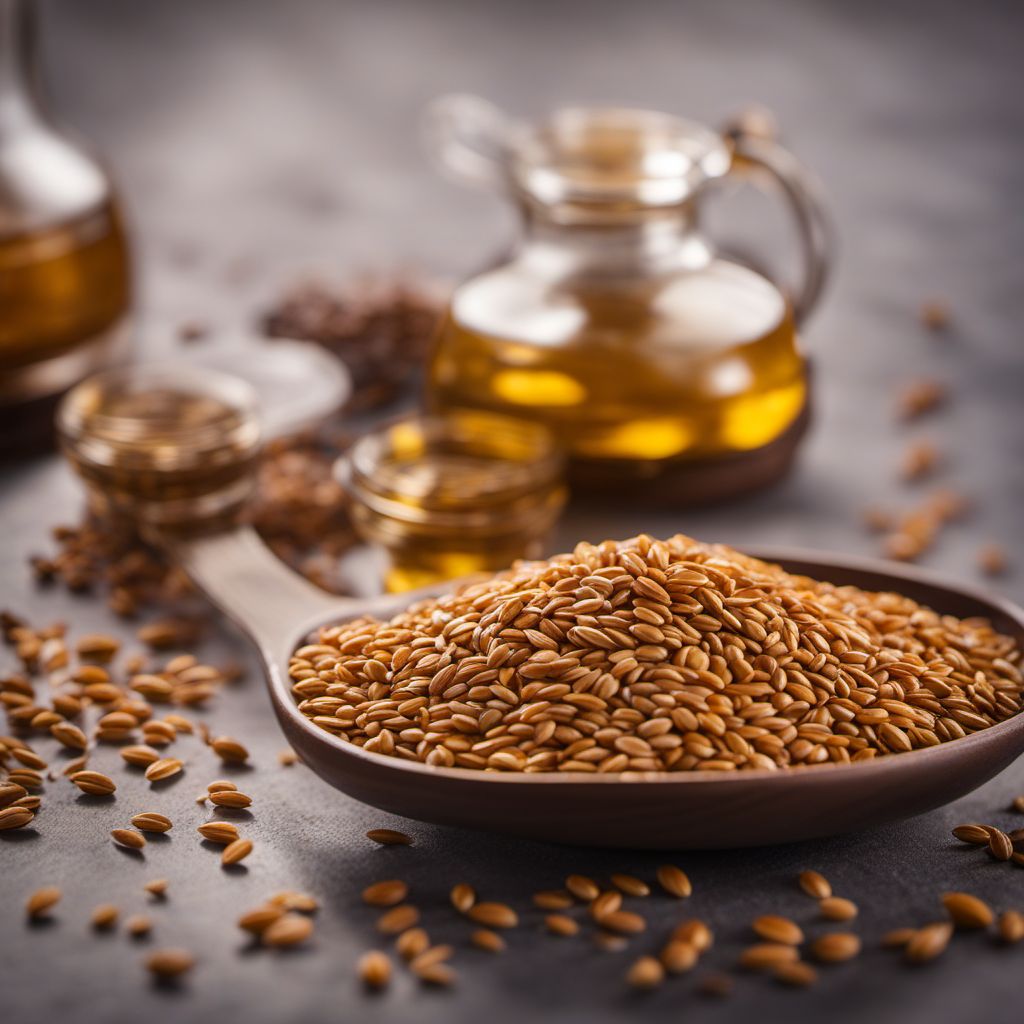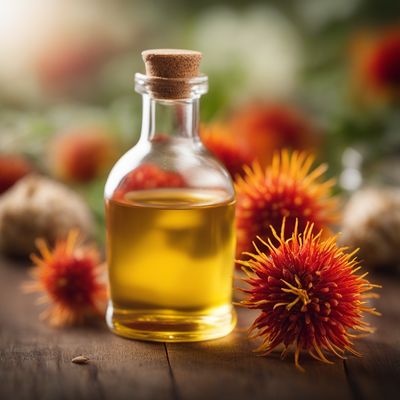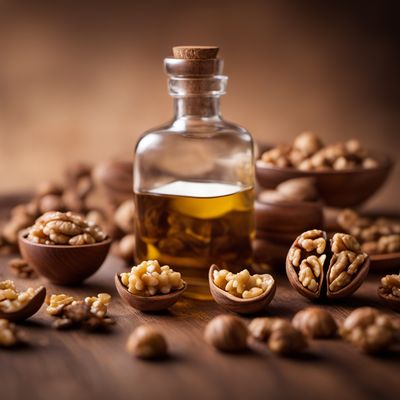
Ingredient
Linseed oil
The Golden Elixir: Linseed Oil
Linseed oil is derived from the seeds of the flax plant and is known for its golden color, nutty taste, and smooth texture. It is rich in omega-3 fatty acids, antioxidants, and lignans, making it a valuable addition to a balanced diet. Its vibrant hue and distinct flavor make it a delightful ingredient in dressings, marinades, and baked goods.
Origins and history
Linseed oil has a long history dating back to ancient civilizations such as Egypt and China, where it was used for medicinal and culinary purposes. It was highly regarded for its healing properties and was even used as a preservative for paintings. Today, linseed oil is widely cultivated in regions such as Canada, China, and India, and continues to be valued for its nutritional benefits and culinary versatility.
Nutritional information
Linseed oil is a nutritional powerhouse, packed with omega-3 fatty acids, which are essential for brain health and reducing inflammation. It is also a good source of vitamin E, fiber, and lignans, which have antioxidant and hormone-balancing properties. A tablespoon of linseed oil contains approximately 120 calories.
How to select
When selecting linseed oil, opt for cold-pressed varieties to ensure maximum nutritional value. Look for bottles that are tightly sealed and stored away from direct sunlight. Check the expiration date to ensure freshness, as linseed oil can turn rancid if not stored properly.
Storage recommendations
To maintain the freshness and quality of linseed oil, store it in a cool, dark place, such as a pantry or refrigerator. Make sure the bottle is tightly sealed to prevent oxidation. Avoid exposing it to heat or sunlight, as this can degrade its nutritional properties.
Preparation tips
Linseed oil is commonly used as a finishing oil for salads, dressings, and dips. It can also be drizzled over roasted vegetables or used as a substitute for butter or other oils in baking recipes. When using linseed oil in cooking, it is important to note that it has a low smoke point, so it is best suited for low-heat cooking methods.
Culinary uses
Linseed oil is widely available in grocery stores, health food stores, and online retailers. It is commonly found in the cooking oil section or the health food aisle. It is cultivated in various regions around the world, including Canada, China, India, and Europe.
More ingredients from this category » Browse all

Sunflower seed oil, edible
Golden Elixir from the Sun

Soya bean oil, refined
The Versatile Oil: Refined Soya Bean Oil

Rape seed oil, edible
The Golden Elixir: Edible Rapeseed Oil

Peanut oil, edible
Liquid Gold: Unveiling the Versatility of Peanut Oil

Maize oil, edible
Golden Elixir: Unveiling the Secrets of Maize Oil

Safflower seed oil, edible
The Golden Elixir: Unveiling the Secrets of Safflower Seed Oil

Cotton seed oil, edible
The Versatile Cotton Seed Oil

Pumpkin seed oil
Liquid Gold: Unveiling the Richness of Pumpkin Seed Oil

Walnut oil
Liquid Gold: Unveiling the Richness of Walnut Oil

Grape seed oil
The Versatile Elixir

Hemp seed oil
Nature's Elixir

Almond oil
Liquid Gold
